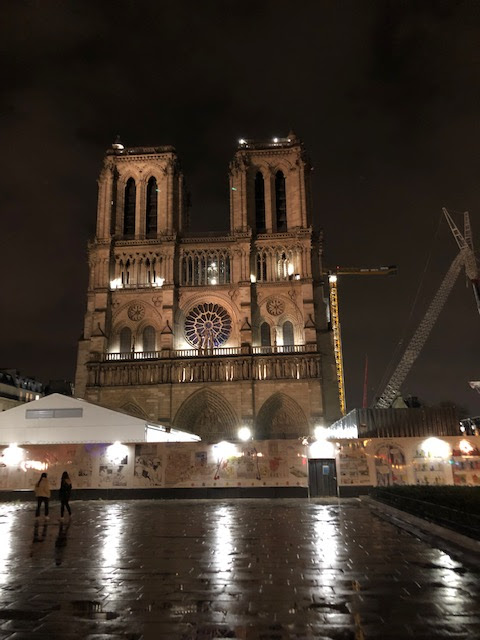Today I'm going to talk about a bike and a bike lane.
First, what I rode for three days in Paris. I'd already mentioned it in an earlier post. I wanted to come back to it because it's unlike any other rental bike--or any other bike, period--I've ridden.
It's like the other bikes that comprise Paris a Velo's current rental fleet. When I availed myself to their services four years ago, the bike I rode--which, again, was like the others in their rental fleet at the time--was a kind of hybrid/city bike. It wasn't made for fast riding, but it sucked up abuse and neglect pretty well.
The same could be said, perhaps even more so, for the bike I rode on this trip. Victor assured me that the tires were "flat resistant" and that the bike shouldn't give me trouble. He was right on both counts. What I found interesting about this machine, though, were its construction and its ride.
About its build: While it, not surprisingly, doesn't have the fine filet-brazing of a constructeur bike, it did incorporate at least one principle of those old masters: structural integrity. The rear rack is of a piece with the frame, and the front end is braced for strength. One result is a surprisingly stable ride given the small wheels.
Those wheels, perhaps not surprisingly, got me to thinking about the one small-wheeled bike I owned and rode for any period of time: a Dahon Vitesse. (I briefly owned an Italian folding bike that I found on a curbside and "flipped" a few days later.) One major difference, of course, is that the Paris a Velo bike doesn't fold. That might be the reason why the PV bike felt so much more stable and was unexpectedly easy to accelerate.
(Oh, and I want to add that Victor included a really nice rain cape with the rental. I was tempted to ask whether I could buy it from him.)
One of the first places where I rode it was a bike lane along the Seine, toward the Notre Dame. Too often, when I see new bike lanes in the US, I ask, "Why did they bother?" If a lane isn't demonstrably safer than riding in traffic, there simply is no point to it. Whoever designed that lane must have understood as much: It's physically separated from the roadway by barriers that motor vehicles can't easily cross. Better yet, there's plenty of room for cyclists traveling in both directions. Too often--as with the Crescent Street lane in front of my apartment--a cyclist coming from the opposite direction risks a head-on collision or forces one cyclist to veer into traffic traveling in the opposite direction. (Crescent is a one-way street.)
So...while there might not be one "right" way to do a bike lane or city rental bike, I am happy to have experienced both done right.










.jpg)


.jpg)


